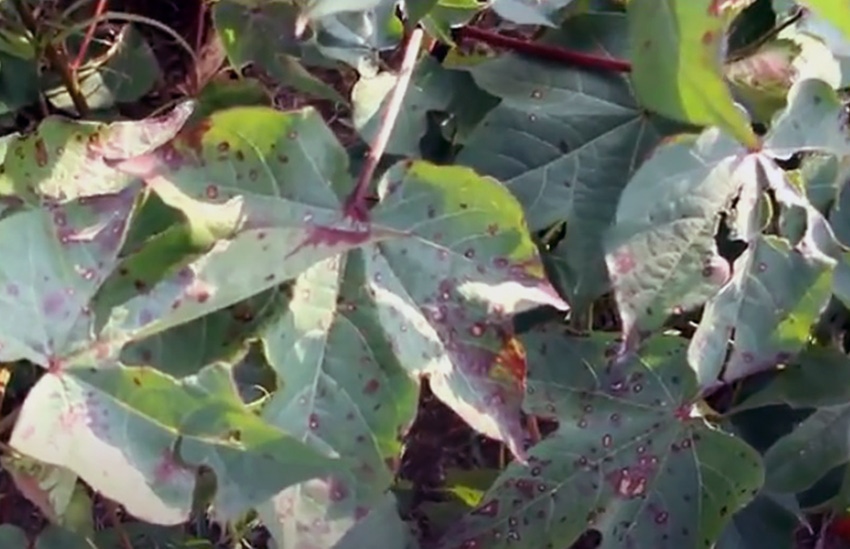
In August, Alabama cotton growers and Extension specialist started to see more fields hit with Stemphylium leafspot, and Eddie McGriff says he is still getting a lot of questions about the problem.
Stemphylium leafspot isn't new to growers who know it is caused by potassium deficiency in leaf tissue when potassium is rapidly taken from leaves and stems to fill developing bolls. The plants become vulnerable to fungi like Stemphylium and, to a lesser extent, secondary pathogens such Alternaria and Cercospera.
Stemphylium is most common in dry land fields under drought stress. Short season varieties can sometimes be more susceptible to Stemphylium since they often have an intense demand for K in a short time. Alternaria and Cercospera can also cause problems under irrigation, particularly in the latter stages of flowering with a heavy boll load and if heavy rainfall or watering has promoted K leaching, according to Alabama Cooperative Extension.
In this video, McGriff, Alabama Cooperative Extension agronomic agent, and Alabama Extension fertility specialist Audrey Gamble discuss Stemphylium leafspot and shed light on why it is prevalent this year in Alabama cotton.
According to the National Agricultural Statistics Service Southern Region office's Aug. 12 report, Alabama growers planted 470,000 acres and planned to harvest 465,000 acres, or roughly 75,000 acres less than 2019. The forecast average yield is 981 pounds per acre, or 53 pounds more than last year's average.
About the Author(s)
You May Also Like






